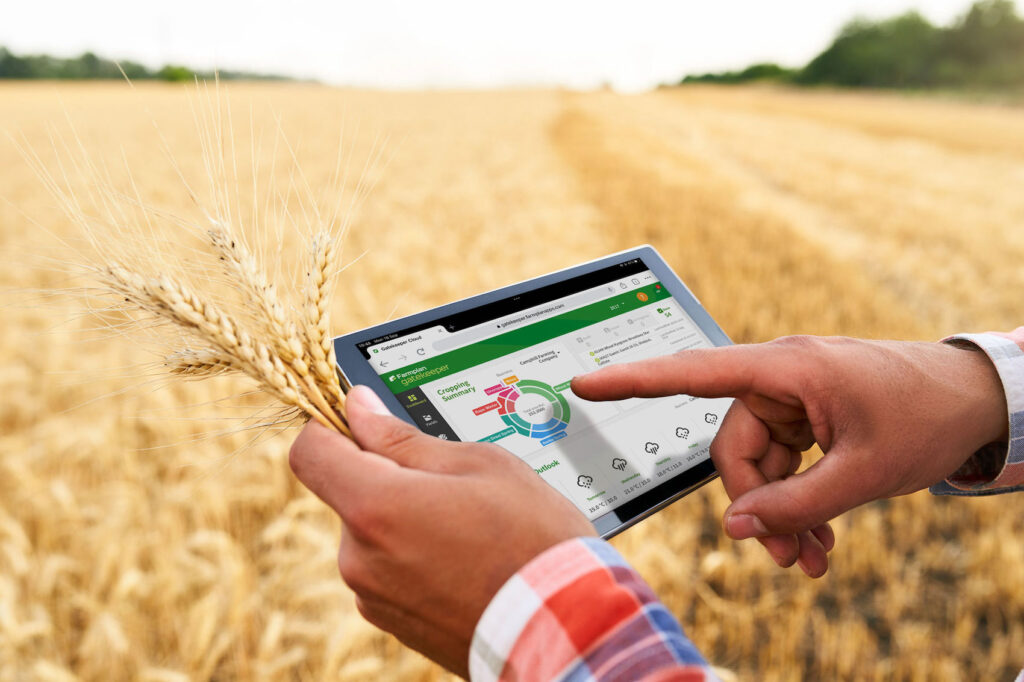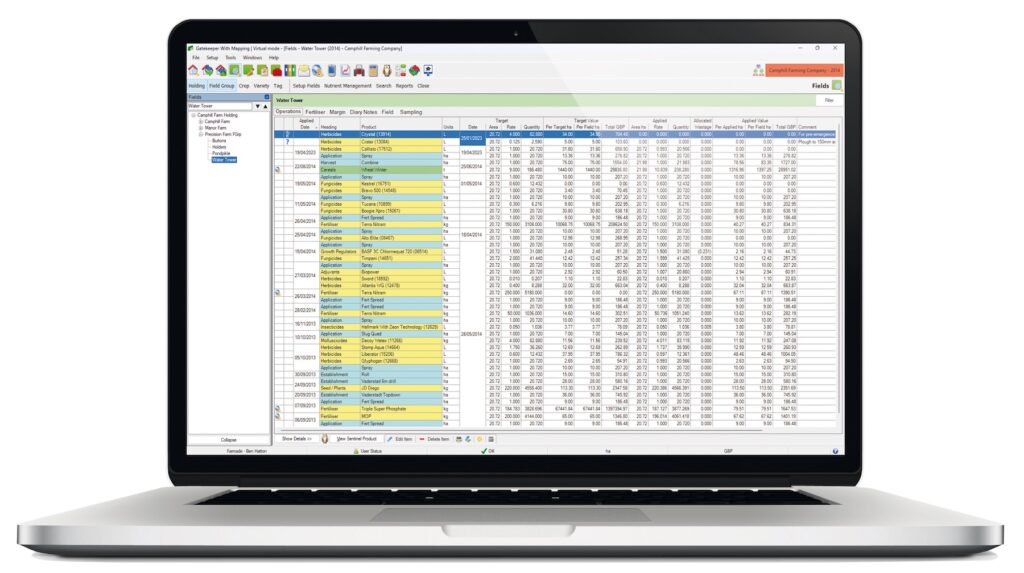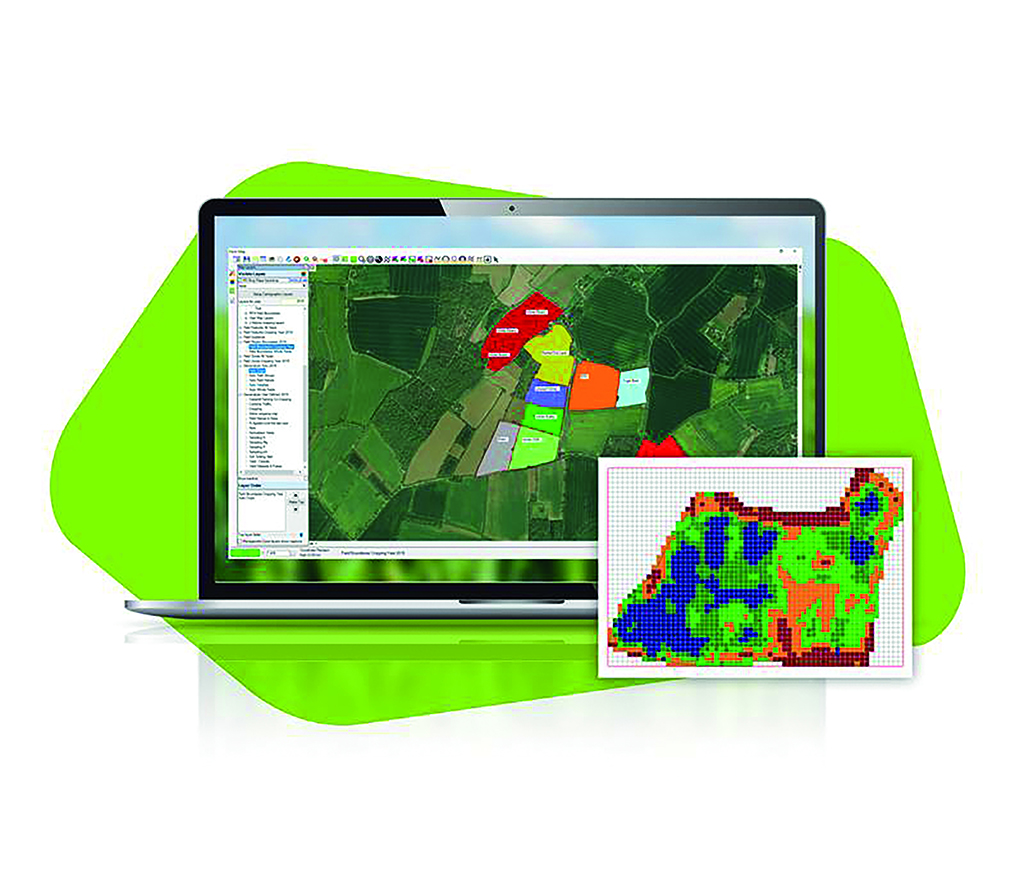Cultivating resilience: the value in your 2023 harvest yield data
16th October 2023
After a difficult end to this year’s growing season, now is the time for farmers to consider how best to prepare for life after the 2023 harvest. Key to that is being able to analyse and understand your farm data so you can make informed decisions and the best choices for your farm business.

“Every farmer wants to get the best returns for their efforts every year,” says Ben Hatton, Gatekeeper key account manager, Farmplan. “Naturally, there are some things that are out of your control, something which was certainly demonstrated this year.
“However, there are key agronomic and management decisions that, using the right information, can make a huge difference to a farm’s profitability and indeed its sustainability.”
Growers are increasingly turning to farm management software, which helps turn yield data into truly effective actions that bring valuable returns for farm businesses. This is crucial in a sector which needs to remain profitable amid relentless change, volatility, and an increasing demand for sustainability and traceability at every level.

Getting more value from yield data
Yield data is plentiful; the technology has become almost commonplace in the arable sector, and yield mapping is gaining a similar level of acceptance too. However, in many cases, there remains a large gap between how much data is collected by the combines which are fitted with yield monitors and the value growers are extracting from that data once it is brought back into the farm office.
So how can farmers get more value from their yield data? Investing time and resources in analysing yield maps is a great place to start. This will provide invaluable insights into what is happening on their farm which they can use to really drive their business forward.
Organised and accurate yield maps provide a benchmark for farm performance and a reference for financial values and measurements. This gives growers a greater sense of where they are financially and allows them to drill down into which parts of their farm business are doing well and which parts are underperforming. Gross margin reporting provides visibility across the field and farm based entirely on the user’s own records.
Being able to leverage data from yield mapping comparisons doesn’t just help you understand where you are now, it shows you where you are heading.
It provides a reference for further crop inputs, allowing growers to map records across growing seasons from 2023 and beyond, so they can fine-tune their approach and make more informed decisions. What you can better measure, you can better manage.

Seeing the big picture of farm performance
Yield maps can offer insight into what is happening and at the end of the growing season, they are the ‘benchmark’ of performance. Growers are increasingly realising the benefits of collecting this valuable information over time, using tools like Proagrica’s Farmplan Gatekeeper as part of a bigger picture view of their farm business that also includes historical, agronomic, and local knowledge to aid decision making.
Adam Joslin, Gatekeeper software specialist, says the more yield data history you have the more reliable it is. “Gatekeeper software has always been at the forefront of compatibility and it can import yield data across a whole range of manufacturers. Plus, it provides correction and analysis of the raw data to help you make more of this information.
“I was with a client recently, who was in the middle of submitting a new stewardship agreement. He asked how he could decide which areas of his farm are better out of production. Yield information can support important decisions like this and much more.”
Getting the best from smart analysis tools
The key to closing the gap between data collection and data value is making full use of smart analysis tools, which allow farmers to adopt a variable input system based on yield maps and other data. This can bring considerable cost savings in terms of reduced inputs, less machine use and maintenance, and less operator time, but also important environmental benefits for the soil, wildlife, and the wider environment.
